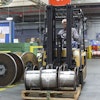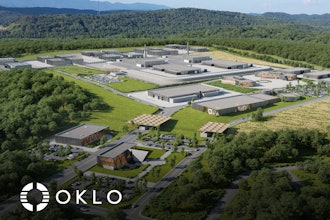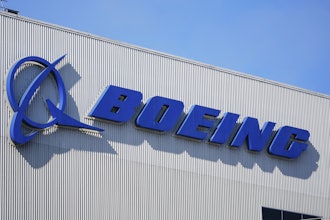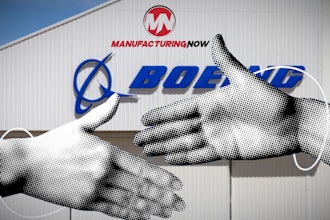It is the moment you never want to see, hear, or learn about on the production floor: a bang or a crash, a shout, and the terrible realization that one of your employees has been injured on the job.
In that dreadful moment, you know that many things have been lost — a person’s well-being, and possibly their life, the morale of the people in that work unit, and possibly, some part of their confidence in the safety of their workplace. Underlying all of that, the productivity, cohesion, and steady workflow you depend on to deliver a competitive, profitable product may also be impacted.
Workplace mishaps across all industries and sectors in the United States killed 5,190 employees in 2016, according to the U.S. Bureau of Labor Statistics — resulting in nearly 2.9 million non-fatal injuries. Fortune points out that the death rate is a big improvement from four decades ago when 14,000 Americans died on the job each year.
While this is an improvement, the 2016 statistics still translate into 14.2 on-the-job deaths per day, and 5.5 injuries per minute. The impacts are a serious drain on companies and the wider economy — as much as $250 billion per year since 2007, including nearly $1 billion per week that employers pay in worker compensation costs, the Occupational Safety and Health Administration (OSHA) reports.
Safer Operations Mean Higher Productivity
Compared to health and safety, there is not a part of any enterprise where the old line about an ounce of prevention is more pertinent, or more important. Apart from the lasting human impact and anguish of a workplace accident, properly-maintained equipment and well-honed, well-understood safety procedures support a company’s bottom line. A safe workplace is essential to ensuring consistent, reliable, uninterrupted operations. It helps to build and sustain a company’s social license to operate and keep workplace relationships smoother and more collaborative.
“Injuries and illnesses increase workers' compensation and retraining costs, absenteeism, and faulty product,” OSHA states. “They also decrease productivity, morale, and profits.”
By contrast, with strong safety programs, one Fortune 500 company improved productivity by 13 percent, while a smaller, 50-person operation decreased faulty product and saved more than $265,000.
“Safe workplaces provide the consistency and reliability needed to build a community and grow a business,” the agency adds. “Workplaces with active safety and health leadership have fewer injuries, are often rated ‘better places to work,’ and have more satisfied, productive employees. These employees return to work more quickly after an injury or illness and produce higher-quality products and services.”
There Are No Accidents
The question for many businesses is how to get from here to there.
Among transportation safety professionals, there is a bottom-line assumption that there are no accidents on the road, just collisions that could have been prevented with the right mix of foresight, planning, and timely, preventive investment. It is hard to think of a sector where that basic principle does not apply but deciding to do the right (and most profitable) thing is just the first step.
An end-to-end approach to workplace safety begins with a dedicated effort to keep equipment in optimum, safe working order, develop proper workplace procedures and rigorous training plans, and deploy sensors that set off alarms or simply shut down equipment when it is being misused.
But then, as with any other asset management task, the next step is to shift focus from the individual device to the wider enterprise.
A Safer Workplace With Enterprise Asset Management
Most companies have at least built corrective maintenance plans, based on spreadsheets that track inspection and repair histories for critical devices and equipment. A comprehensive, cloud-based enterprise asset management (EAM) system does much more.
An effective EAM system:
- Maps out preventive and predictive maintenance schedules based on manufacturers’ specifications and actual equipment histories, helping to keep critical assets in top condition rather than failing or becoming a safety risk.
- Uses Internet of Things (IoT) technology to spot changes in equipment function that point to deficiencies, inefficiencies, or emerging hazards before they are visible to human eyes.
- Replaces hard copy maintenance routines with mobile checklists to make better use of technicians’ time, and automatically uploads service records to a central server.
- Captures the content from multiple volumes and editions of hard copy manuals in electronic formats that are easier to use, and readily accessible to maintenance staff working in remote locations.
By consolidating asset management records in a format that is compatible with the company’s enterprise software platform, EAM gives senior management immediate visibility on maintenance costs and performance — and on the implications for operational safety.
Planned maintenance work is always safer and more efficient by having the proper safe work instructions along with the necessary parts, permits, tools, and personal protective equipment (PPE) on hand. Through the lens of enterprise asset management, the connection between safe operations and productive business systems is crystal clear. If you adopted a sound approach to EAM, you have probably seen a corresponding reduction in injuries, downtime, and associated costs. If you are responding to injuries and near-misses too often, that safety record is probably a bellwether for other costs and business impacts across the system — and an opportunity for significant savings.
Unless your business line happens to have something to do with health and safety, you may not have too many opportunities to literally save lives while boosting your own bottom line. Enterprise Asset Management helps you connect those dots at the most visceral level, preventing as many shop floor safety incidents as you can before they happen.
Mike Stone is an Infor EAM Product Manager, CMRP.






















